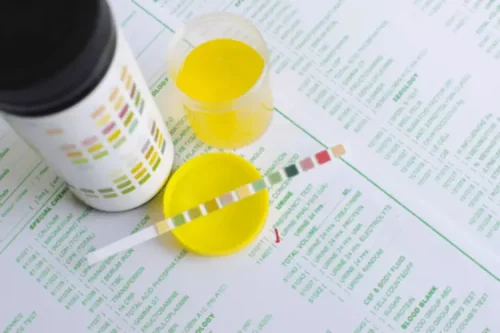
The prognosis for individuals with AKA depends on various factors, including the severity of the condition, the presence of other medical complications, and the individual’s commitment to recovery. With prompt medical intervention and appropriate treatment, the outlook for individuals with AKA can be positive. However, it is important to note that continued alcohol abuse can lead to recurrent episodes of AKA and other serious health complications. Seeking medical help and addressing the underlying alcohol abuse problem is crucial for long-term recovery and improved prognosis. Overall, the causes of alcoholic ketoacidosis involve the inhibition of gluconeogenesis, disruption of glucose metabolism, impairment of pancreatic function, and altered lipid metabolism. Understanding these underlying mechanisms can help healthcare professionals in the diagnosis and management of AKA in patients who abuse alcohol.
Alcoholic ketoacidosis: clinical and laboratory presentation, pathophysiology and treatment
These may include rapid breathing (tachypnea), fruity-smelling breath (acetone odor), dehydration, abdominal pain, and altered mental status. The presence of these clinical features, along with a history of alcohol abuse, raises suspicion for AKA. Often, blood alcohol levels are no longer elevated when patients present with alcoholic ketoacidosis. If you chronically abuse alcohol, you probably don’t get as much nutrition as your body needs. Going on a drinking binge when your body is in a malnourished state may cause abdominal pain, nausea, or vomiting.
Alcoholic Ketoacidosis: Signs, Symptoms, and Treatment
If The Recovery Village is not the right fit for you or your loved one, we will help refer you to a facility that is. Hydration with 5% dextrose in normal saline (D5 NS) is the typical choice for AKA management. This IV solution halts ketogenesis, stimulates insulin production, and increases glycogen stores.
Managing Alcoholic Ketoacidosis: Treatment Strategies
Additional risk factors for developing alcoholic ketoacidosis can include pancreatic conditions, liver disease, and a history of recurrent alcoholic ketoacidosis. These factors can make it even harder for the body to manage glucose and ketone levels. During the physical examination, the healthcare provider will look for signs and symptoms that suggest AKA.

Signs and Symptoms
- The presence of these clinical features, along with a history of alcohol abuse, raises suspicion for AKA.
- The first step in alcohol metabolism is the conversion of ethanol to acetaldehyde by the enzyme alcohol dehydrogenase.
- Take our free, 5-minute alcohol abuse self-assessment below if you think you or someone you love might be struggling with alcohol abuse.
- The primary goals of treatment are to restore electrolyte balance, normalize blood glucose levels, and provide supportive care.
- During the physical examination, healthcare providers may look for signs such as rapid breathing, fruity breath odor, dehydration, and abdominal pain.
However, the long-term prognosis depends on the severity of the underlying alcohol abuse disorder. When your body burns fat for energy, byproducts known as ketone bodies are produced. If your body is not producing insulin, ketone bodies will begin to build up in your bloodstream. This buildup of ketones can produce a life-threatening condition known as ketoacidosis. These tests may include blood tests to measure the levels of ketones, glucose, electrolytes, and liver enzymes. Additionally, a urine test may be conducted to check for the presence of ketones.
Signs and symptoms
It is important to recognize the signs of AKA and seek medical attention promptly, as it can be a life-threatening condition. The imbalance between insulin and counter-regulatory hormones leads to a state of insulin deficiency and increased lipolysis. The breakdown of fatty acids produces ketone bodies, including acetoacetate and beta-hydroxybutyrate. These ketone bodies accumulate in the blood and result in a condition known as ketoacidosis.

Connect with UF Health
It is important for individuals recovering from AKA and their healthcare providers to work together to develop a comprehensive management plan that includes these lifestyle changes. Such a plan not only aids alcohol ketosis dangerous in recovery from AKA but also contributes to long-term sobriety and health maintenance. Patients with AKA are typically hospitalized to receive close monitoring and appropriate medical interventions.
- The resulting increase in the NADH/NAD+ ratio inhibits hepatic gluconeogenesis and elevates the ratio of hydroxybutyric acid to acetoacetic acid.
- The prevalence of AKA in a given community correlates with the incidence and distribution of alcohol abuse in that community.
- Several mechanisms are responsible for dehydration, including protracted vomiting, decreased fluid intake, and inhibition of antidiuretic hormone secretion by ethanol.
- Free fatty acids are removed by the liver, where they primarily undergo oxidation to hydroxybutyric acid and acetoacetate and subsequently are reesterified to triglyceride.
- Acetaldehyde is metabolized further to acetic acid by aldehyde dehydrogenase.
Get Help for Alcohol Addiction Today
Detection of acidosis may be complicated by concurrent metabolic alkalosis due to vomiting, resulting in a relatively normal pH; the main clue is the elevated anion gap. If history does not rule out toxic alcohol ingestion as a cause of the elevated anion gap, serum methanol and ethylene glycol levels should be measured. In addition, AKA is often precipitated by another medical illness such as infection or pancreatitis.



